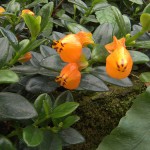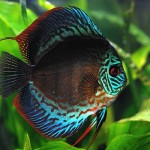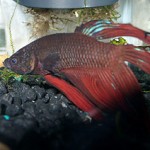There are filters being sold right now that will KILL countless fish over time! This is a bold however a true statement. The fish-killing filters are missing a key component. Let’s look at the most popular types available along with the key elements that will ensure complete filtration.
There are several types of filters that can be used with freshwater fish. The most common are hang-on-the-back or power filters, canister and wet-dry or trickle filters. Most new fish hobbyists start with hang-on types because they are inexpensive and most will work in both salt and freshwater. A power filter hangs on the back of an aquarium; a small pump pulls water up through an intake (siphon) tube and into a plastic box where it is then directed through a cartridge, sponge or special media and finally spills back into the aquarium.
In this case, size does matter: the aquarium size dictates what size filter to use. Choose one with a flow rate of 6 to 8 times the number of gallons of the aquarium.
It is critical that the water creates ripples on the surface water as it is returned to the aquarium because the top 1/16″ is where gas exchange takes place. So, for the water to get oxygenated and CO2 to be released there needs to be surface movement (this is true unless oxygenation takes place in the filter.)
Before looking at other types of filters let’s look at the three types of filtration: mechanical, biological, and chemical. Mechanical filtration is made up of a floss cartridge, pad or sponge. Mechanical media traps large particulate matter. The biological portion is made of ceramic rings, plastic bio balls, sponges, or fiber wheels. Biological media provides surfaces for good bacteria growth. These bacteria break down fish waste and other organic nutrients. Chemical filtration can be achieved through a good grade of activated carbon which adsorbs dissolved organics to reduce odors and removes yellow color from the water.
When choosing a filter you will find several manufacturers which do not offer biological media. Good bacteria (which break down the fish waste) will grow on any surface area where there is water, food and oxygen. The challenge is this: surface areas such as artificial plants and decorations are removed and cleaned when water is change, killing life-preserving bacteria. There must be a place provided where a huge colony of good bacteria can live, grow, and are not removed each time the tank is cleaned. Adding biological media to handle a well stocked tank is a must. So many hobbyists unknowingly sign a death sentence for their fish just by purchasing a filter that does not contain biological media.
Canister filters come in a variety of different sizes and are sold according to their flow rates. A canister generally sits in a stand below an aquarium and allows aquariums to sit closer to a wall. (Hang-on filters normally space the aquarium and stand several inches away from the wall.) Canisters are also designed to hold more media than hang-on styles. Square or cylindrical in shape, a canister will have two flexible tubes attached to its lid. One tube takes water from the aquarium, the other piece of tubing channels water back into the aquarium.
Each manufacturer makes canister filters a little differently, but they all work basically the same way. Once the water enters the plastic filtering tank, it is channeled through a series of trays or containers which hold various types of media. After the water passes through the media and is pumped back to the tank through the return tube. The clean water is either forced through a spray bar or a return with a deflector. Canister filters are extremely quiet.
A wet/dry or trickle filter provides mechanical and biological with the option to add chemical filtration. A Wet/Dry can be constructed out of glass or plastic and is generally placed in a stand under the aquarium. There are many different designs but they all work on basically the same principle. Water from the aquarium goes through the mechanical filter media and then falls onto a tray with holes. These holes spread the water out evenly, allowing for a shower effect below as the water drops onto the bio media. Bio-media is kept above the few inches of clean water using a grate. Once the water flows over the bio-media it is collected in the bottom area known as the sump. Keeping the bio media chamber above the water level provides an environment high in oxygen that is extremely beneficial to good bacteria and enables the filter to efficiently remove biological wastes.
The sump is where water is stored and used to keep the aquarium full. If the sump is large enough it can house a heater and a return pump. Most wet/dry filters also have compartments where chemical adsorbing media such as carbon can be placed.
The key to becoming a successful hobbyist is to choose a filter that provides plenty of water flow to create a never ending supply of oxygen for the fish. It also MUST provide all three types of filtration: mechanical, biological, and chemical.

















Leave a Reply